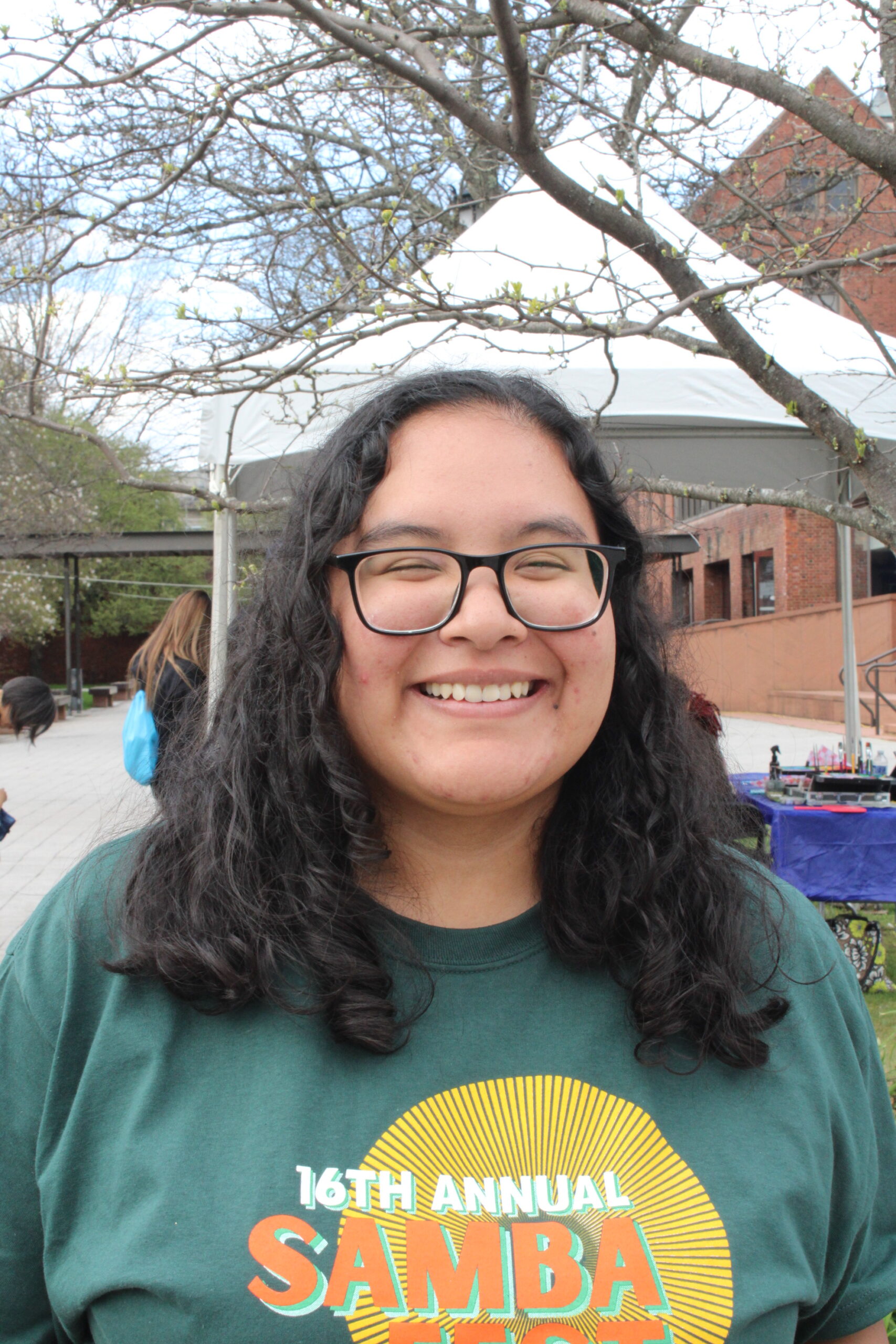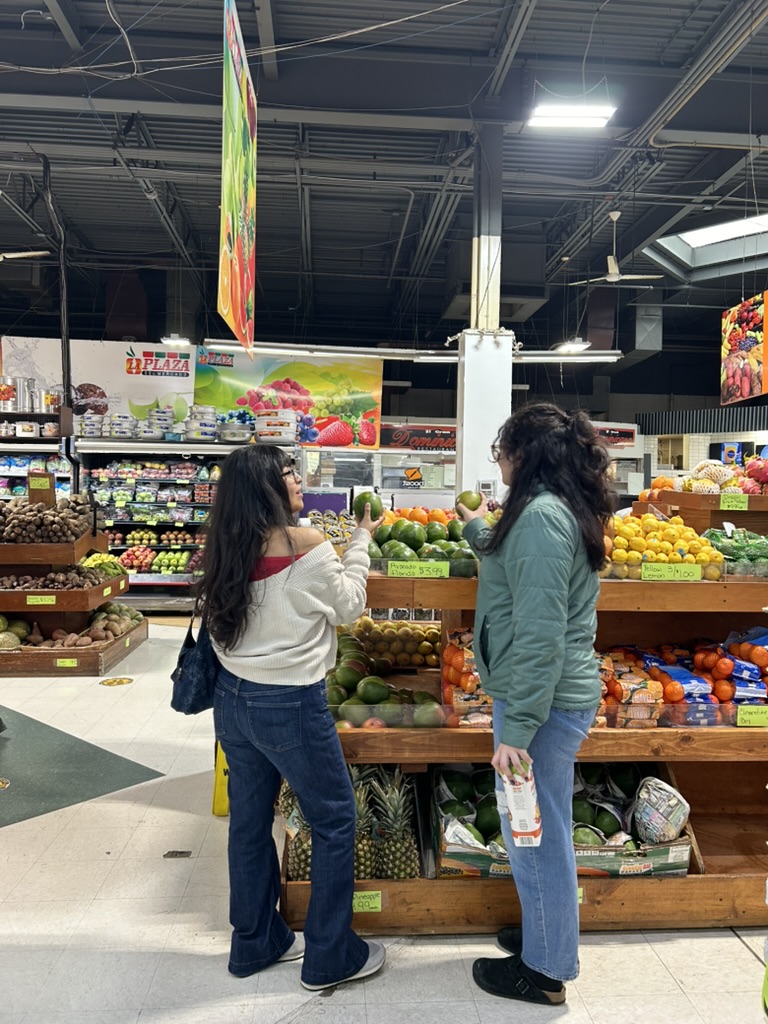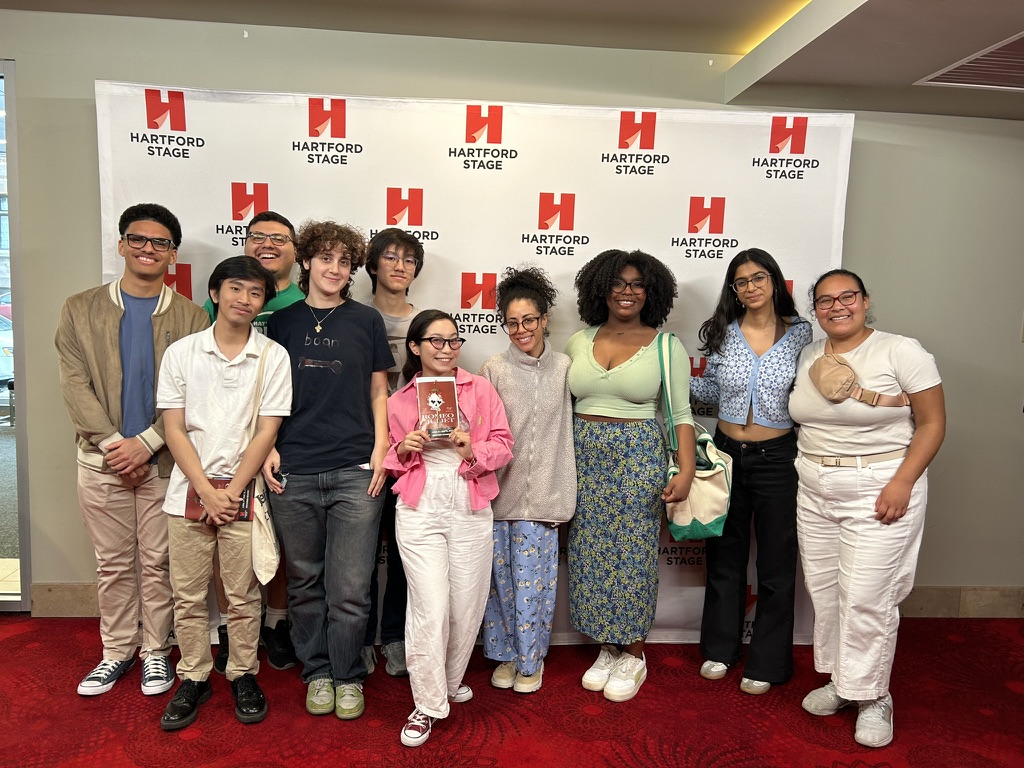 Name: Mafer Vacca
Name: Mafer Vacca
Major and year: Urban Studies, Class of 2027
Organizations involved in: CHER (previously through the Liberal Arts Action Lab and the Public Humanities Collaborative, and currently as Community Engagement Fellow and Community Learning Research Fellow), and the Center for Caribbean Studies as a Research Assistant
How did you first get involved with the Center for Hartford Engagement and Research (CHER)? What initially inspired you to participate in community learning or civic engagement initiatives?
The Cities Gateway gave me a sneak peek at CHER! But I first got involved with CHER through the Liberal Arts Action Lab. I was new to the concept of doing research, and I knew I wanted to explore it, but further than just conceptually. The Action Lab was a perfect mix of academic exploration and hands-on work.
As someone who has grown up for most of her life in a port in Perú, I deeply care to understand how urban dynamics and design hinder or enhance a community. Being at Trinity, in such a vibrant and diverse city as Hartford is, I quickly became interested in understanding the interplay between the school and the broader community. Sharing a Latin identity with a significant portion of Hartford’s population has also made me connect to a closer level with the city, and I knew that I wanted to continue this bond at Trinity.
What has been the most rewarding part of your work with CHER, the Office of Community Service and Civic Engagement, or community learning?
I definitely think that the most rewarding part of working with CHER has been getting other students to know Hartford’s hidden gems. For instance, any Broad Street connoisseur might know which specific restaurant on that street serves good tacos, but if they walked a couple of blocks away, they would find a cheaper option with equally good food. Saanvi, last semester’s Community Engagement Fellow, and I took students there, and we like to think that they really liked the place. I think that small steps like knowing a new restaurant or learning a new bus route help to deconstruct the so-called “Trinity bubble” surrounding this institution.
Can you share a memorable experience or story from your involvement with CHER? What was your favorite event or project as a CE Fellow?
Last semester, we organized a walking tour called (Im)migrant Hartford. This was an idea that we, as Engagement Fellows, had amidst the political climate. Considering Hartford’s population, we were able to design a walking tour around some places in Frog Hollow and downtown, such as the María Sánchez Elementary School, El Mercado, and an exhibit at Capitol Community College about the Puerto Rican Diaspora. The event ended at Viva Mexico, a restaurant on Park Street. I think this is my favorite event so far, as it really highlights how much of a learning space Hartford can be, and how we, as Trinity students, engage with the different social, cultural, and political dynamics that might be represented in Hartford. Organizing the tour and deciding where we could go was a learning process as well. We were able to deconstruct some negative connotations that Latin populations might encounter. Recognizing that our work cannot be foreign to those but rather a channel to initiate conversation and address them was something I appreciate dearly about the event.

Is there a specific community project or partnership that stands out as particularly impactful for you?
I am impressed by the work that Trinfo does for the Hartford community! The project I was part of during the Action Lab, the Family Finance one, conducted some interviews with Hartford residents who came to Trinfo to benefit from the free tax services. Now that it is open again with a much more extensive set of services and support for the Hartford community (such as career readiness, the local garden, FAFSA workshops, and much more), I am able to recognize how impactful Trinity’s engagement with the community can be.
This summer, I was also a student assistant for the Public Humanities Collaborative. The array of projects and their mission was truly amazing. I admire the student researchers and the community partners for conducting thoughtful research on meaningful topics! One of the projects that stood out to me the most was the Digital Archive with the Schaghticoke Women’s Traditional Council, researched by Nellie Nguyen and Zeynep Oguzer. The project opens an important space for the Trinity community to engage in respectful learning about indigenous communities, an effort that has been underway for the past two years.
How has your role in CHER allowed you to connect with the Hartford community?
My role in CHER has allowed me to connect with the Hartford community by creating spaces for conversation that should be expanded further. At Hartford’s Night Out, I was able to table for CHER and photograph the event alongside another student. The diversity of the event was vibrant and allowed me to establish conversation with other organizations and learn about their work, bridging the possibility to work with them for other collaborative events! I was able to connect with representatives from the Urban Ecology Wellness Center and the West Indian Independence Celebrations, organizations that highly resonate with the work that other student groups do on campus. This role allows me to be a point of connection between Hartford and Trinity’s student body.
What skills have you developed through your involvement with CHER and community engagement?
Some of the skills I have developed are event organization, budget management, and outreach. Planning events for Trinity students is gratifying and allows me to exercise all of these skills.

How has your involvement with CHER influenced your future goals or career aspirations
As an Urban Studies major within the Urban Planning track, being a Community Engagement Fellow is a middle point between my interest for community work and planning. The events that we plan and attend, as well as the spaces that we are often in (for example, tabling) are all opportunities to understand the intricacies of Hartford’s urban dynamics. Walking tours allow me to realize which streets could benefit from pavement work, for example. Navigating the transport system during our events is also a way for me to exercise my major directly.
I am aware that at Trinity, there are certain stereotypes and prejudices regarding Hartford as a city and its residents. My role as a Community Engagement Fellow allows me to use my academic knowledge to address them through positive experiences. I plan on specializing later as an urban planner or designer, and listening to Trinity’s concerns regarding the whys and whys not of engaging with Hartford is a tool for me to understand how to improve cities equitably, while listening closely to citizens’ needs and feedback.
What motivates you to stay active in community engagement efforts?
I come from a port in Perú, right next to the country’s capital. This port is often stigmatized due to crime rates and a history of drug trafficking. However, my city is also the one that provides the country with the resources for ceviche and seafood, two elements that make Perú a world-class culinary hub. My city is also the Peruvian capital for salsa, constantly attracting well-known salsa artists due to its cultural relevance. I have firsthandly witnessed how stigma has hindered the public perception towards the city, negatively impacting its population and small businesses.
Engaging with a community, understanding it, and most importantly, witnessing its reality free of preconceived notions is crucial to me. I believe participating in events that highlight the richness of cities far beyond just their economic potential should be more frequent. I enjoy creating and being in these spaces anywhere I go, since I have seen how it could have drastically improved notions directed to the place I come home.
Who or what has been the biggest influence on your journey with CHER?
My major significantly relates to CHER’s work and mission, so a lot of people from the CUGS department have influenced my journey with CHER! Learning from Professor Delgado and witnessing her passion for urban planning with a focus on communities (and the groups who are often forgotten when we generalize the community of a place) has inspired my interest in community engagement. Having the mentorship from Robert Cotto, with whom I share a Peruvian identity, has made me connect further with Hartford and its Latin community. Working with Karolina Barrientos and Liliana Polley (who are also fierce Latina women!) has been a fun experience, and both of them showed me that community engagement should also be that way. I definitely miss having Karo around! Connecting with the resources that Derin Atalay and Erica Crowley have suggested, either in their classes or projects, has also influenced the way that I brainstorm ideas for my role. Laura Lockwood and her story with community organizing taught me to deconstruct many notions I had before digging more into involving myself with Hartford. Lastly but not least, Saanvi Bajaj, my previous coworker, has been a person who made my transition into the role more smoothly and enjoyable.
What advice would you give to students interested in becoming involved with CHER or similar organizations?
Hartford is just like any other city, both in terms of its charisma and things that could be improved, too. My advice for students who are interested in becoming involved with CHER or other community engagement organizations is to first be critical of what the common discourse about Hartford might be. To understand that stereotypes come from a lack of knowledge is the first step to becoming more involved anywhere. Hartford is a city with flavorful restaurants and hidden opportunities that have a lot to offer.
Trinity has a vast diversity of student organizations. The ones that advocate for community engagement are led by students with a genuine interest in advocating for their missions. There are so many ways to involve community engagement in any field of interest. Taking a small step, such as attending an off-campus event, is definitely an effort already, and I would urge them not to be afraid to do so.
“Don’t miss a chance to attend the events organized by the Community Engagement Fellows!”
